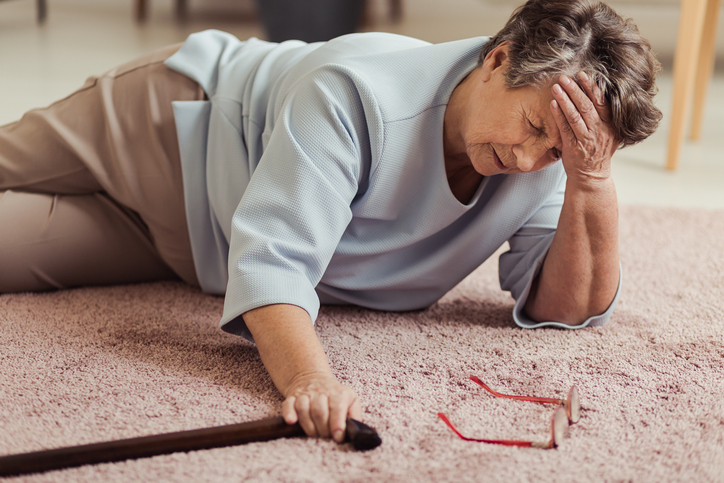Why do I have balance problems?
How can I improve my balance?
Help! I’ve fallen and I need physical therapy!
Did you know that more than 30% of adults over the age of 65 will experience a fall this year? And that of those who do fall, almost 1/3 will suffer a moderate to severe injury? Or that if the fall is serious enough to cause hospitalization, one out of every two patients will be discharged to a nursing home?1 Falls continue to be the leading cause of death from injury in adults over 65 years of age.
If you’ve recently experienced a fall, your primary care doctor will most likely write you a prescription for physical therapy. Physical therapist are trained specialists who can help you regain your balance and improve your strength and mobility. They can also help to increase your confidence to allow you to return to your usual activities without the fear of falling. A study done by Shumway-Cook et al. found that adults aged 65 and older who performed exercises instructed by a physical therapist had significant improvement in mobility as well as a reduced likelihood of future falls.1 So how exactly does a therapist help with your balance and lessen the risk of falls?
There are three subsystems that contribute to your overall balance: the vestibular system, proprioception, and vision. Vision is important to help visualize the world around you and to help prepare you for obstacles in your way. Often vision is most impacted at night time when walking in the dark to the bathroom, which can be eased by using a nightlight. The vestibular system is located in your inner ear and determines your body’s relationship with gravity, forward movement, and head rotation. This can become impaired if there is damage to your inner ear structures or through other disease processes. The last piece of balance is proprioception, or your bodies awareness of where it is in space. There are specific receptors in your muscles and joints that allow you to know where your feet are in relation to your body or if your elbow is bent or straight. This is one area your therapist will target to help train your balance.
What to expect: On your first therapy visit you can expect your therapist to determine your baseline measurements for strength, motion, and overall balance. Additionally, they will assess any other impairments you might have that might be affecting your balance. They will also put you through an objective fall risk assessment to determine which areas you need the most assistance with. From there your therapist will assign you exercises to work on at home as well as develop an individualized plan to address your specific needs. They will work on balance exercises with you in the clinic, challenging the areas you need the most assistance with. Over time the goal of therapy is to improve your strength, balance, confidence, and to decrease the likelihood of experiencing another fall.
~C. Svitek
1. Shumway-Cook A, Gruber W, Baldwin M, Liao S. The Effect of Multidimensional Exercises on Balance, Mobility, and Fall Risk in Community-Dwelling Older Adults. Physical Therapy. 1997;77(1):46-57.

